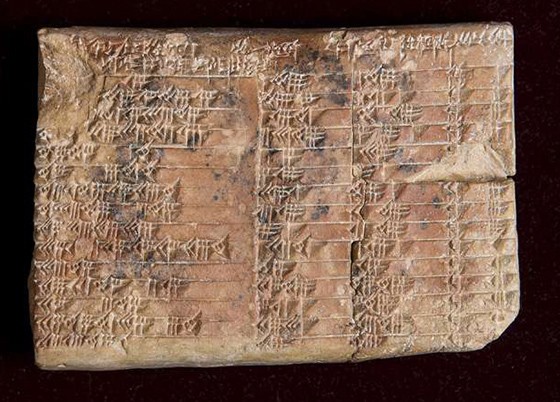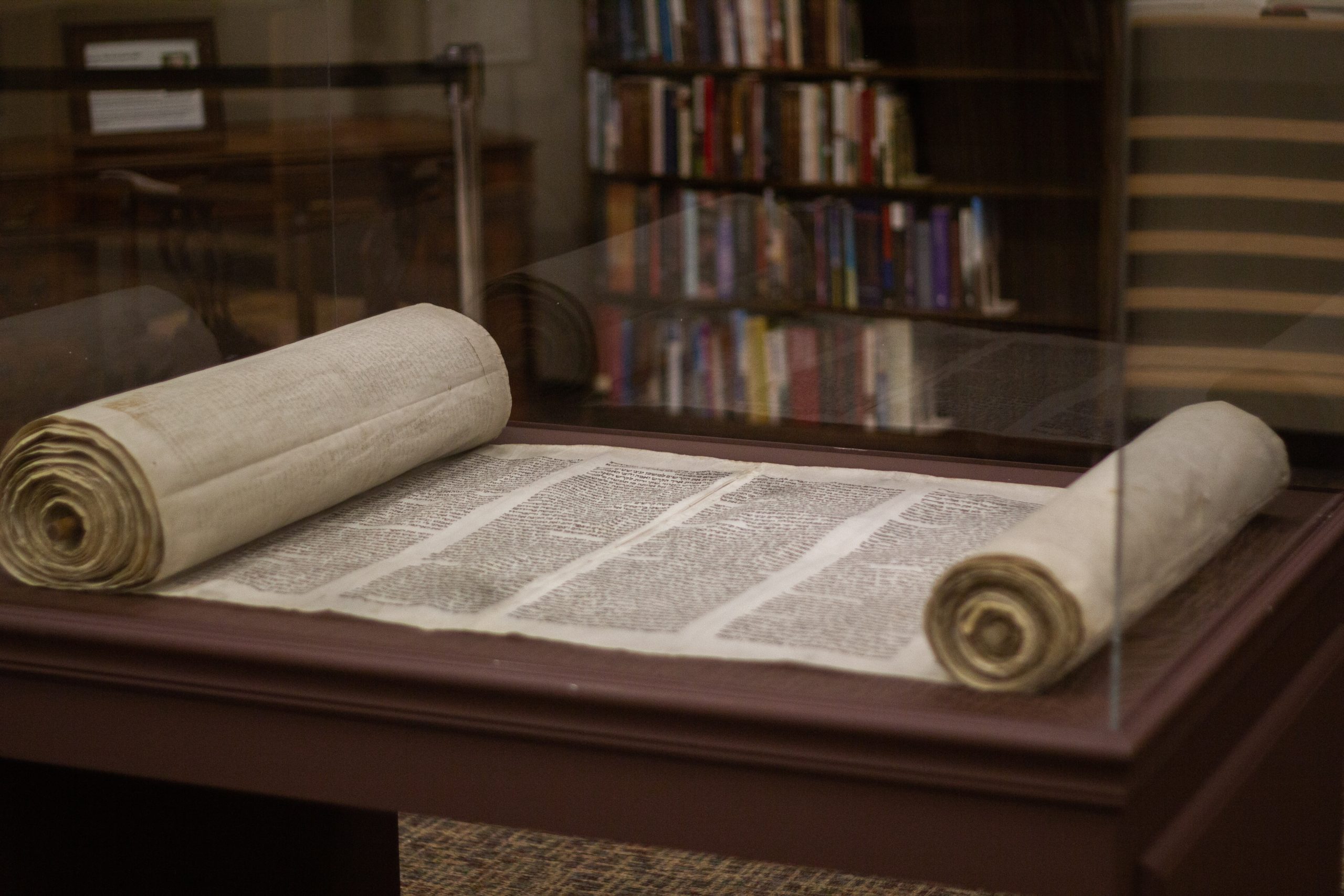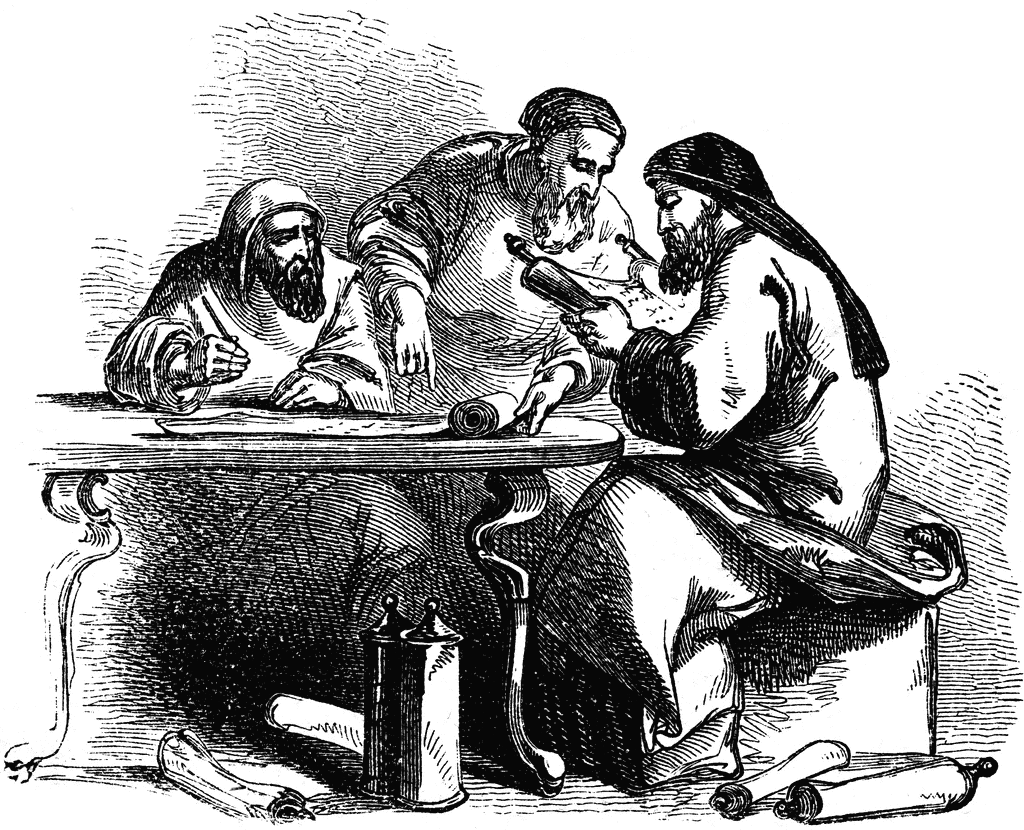Overview: One approach to Torah that answers many question we may have. When we look at Torah with our modern conception of writings, laws, and history, we can bump into many inconsistencies, questions, and issues with Torah. Here we will bring out a point in attempt to answer all these questions.[i]
Torah is from the most ancient documents still around today. But different than other ancient documents, the Torah still has an authority in both history and law for many believers. This authority has become increasingly attacked by modern thinkers and historians. Many Orthodox Jews simply reject the sciences outright in attempt to defend their beliefs. But by doing so, they are simply hiding from what may be the uncomfortable truth. This truth isn’t necessarily that Torah is a man-made document, but rather, as we shall argue here, a divinely-inspired and man-made document written in the perspective and literary style of its times, and intended for the audience of its times.
Mainstream Orthodox Judaism views Torah as a the perfect, infallible, literal work of God as presented to Moses at Sinai. But this extreme view becomes increasingly hard to reconcile when we get a clear picture of archaeology, history, and bible criticism. Bible criticism shouldn’t be an obstacle to faith in Torah; instead, it should serve as a tool to better understand this ancient sacred text we possess. Thanks to modern technology and information, we can interpret and understand Torah better than previous generations were able to do. We now have a clear picture of ancient society in the Ancient Near East in the first and second millennium BCE, when Torah would have been written. We will attempt to put Torah into perspective of its time and answer many questions as a result, including duplications in Torah, the Oral Law, possible errors in Torah, embellishment, multi-authorship, and moral issues.
So the key is to look at Torah as a document written in the 13th-century BCE, for a people familiar with a world very different than ours. It may be hard to imagine, but people of 3,000 years ago had a very different society than we have today; different economy, different culture, different concept of law, different writing style, different notions of recording of history, different conception of authorship of a document, etc. We will now go through these concepts one by one and see how context alone can answer question after question. Many of these concepts have been referenced in other articles and we will link to them when applicable.
Authorship of Torah
As we have discussed here, there is some strong evidence that Moses wasn’t the sole author of Torah, or the Five Books of Moses. Many early sages and commentators believed the same. When Torah was written in the first and second millennium BCE, it was normal to add to documents many generations after the first author wrote the original document. Nowadays, when an author writes a book, it would be preposterous to add or edit that work after the original author signed their name on the book. But back then, authors frequently wouldn’t sign their name on the books they wrote. Instead, only internal references to the writer would be made. In addition, later writers in later generations would have the liberty to add glosses to the original work and even to add full introductions. The same can be said, and should be said, about Torah, originally written by Moses and later added to by later scribes, perhaps prophets or perhaps just scribes.
Possible error in Torah
In continuation of this, we have entertained the idea of possible full sections added to Torah by post-Mosaic authors. They may have added full introductions to Torah, writing the entirety of Genesis – what they thought to be the history of early mankind until the Exodus. We have entertained this as a possibility here. This allows for possible sections in Torah to be errors, having not been written by Moses the Prophet. However, as argued here, this would likely be limited to the historical elements in Torah alone, whereas the Law section would be authored by Moses alone. Regarding the laws the Torah tells us “do not add theron and do not subtract.”[ii] Thus we cannot suggest that the later authors would add to the laws written by Moses. Moses wrote down all the laws commanded to him by God and no one was to add or subtract from that.
Literary style of Torah
Many Orthodox Jews have the notion that Moses wrote the Torah in a word-for-word fashion dictated by God Himself. This view isn’t ill-founded and is indeed rooted in some opinions in the Talmud and later commentators. But as pointed out here, there is little reason to assume such. Rather it would seem that while Moses wrote perhaps the majority of Torah, other later authors would have added to Torah. Similarly, Moses himself may have had scribes working under him as many kings would have back then. This would help explain the clearly different writing styles between various sections in Torah. They would have written in the literary fashion of the time, as the Talmud points out numerous times.[iii] They would have written in the Hebrew script of the time, which was actually different than the Hebrew script we now have, as discussed here. Similarly, the Torah often exaggerates when attempting to bring out a point,[iv] just as writers would frequently do at the time.[v]
More importantly, back when literature was still young and ripe, there were much less writing formalities and grammar rules then what we have nowadays. Therefore, as expected, we indeed find many sloppy grammar mistakes and unconventional writing styles in Torah. This is no issue since at the time that Torah was written, this would have been a normal writing style.[1] The sages often derive laws from these alleged writing anomalies, with the seeming philosophy that these “extra” words were intended to teach secret laws. We explain here how this works with the approach we take here.
History of Torah
Perhaps most significant of this approach of understanding Torah in its historical context, is the concept of “history” as was back in the Ancient Near East some 3,000 years ago. In modern times, history is the exact recording of events exactly as they were and exactly as all the details have happened in reality. But it is clear to historians that ancient inscriptions, documents, and writings all exaggerate and add embellishment to a narrative to bring out the point more. Nowadays there is much interest in the history as it was exactly in reality, whereas in ancient times the point of history was to bring out a message, perhaps a moral one or a religious one. Therefore the ancient writers would add embellishments to the stories in order to bring out the point and message of the story even more. This is most noticeable with the ancient use of numbers in the ancient historical records. Numbers are so frequently (if not almost always) exaggerated to the point that it almost becomes the rule of ancient history. Lifespans and populations were heavily inflated from what they were in reality. This hyperbole may sound shocking to the modern reader but to the ancient reader this was expected.
The Torah is no exception to this writing style. The historical elements in Torah may have been added as embellishment by the Torah author.[2] The basic storyline would have been true, but possible exaggerations in the details and numbers given are a possibility. We cannot know for sure, since, well, we weren’t there – but this should at least be a possibility in our eyes. This isn’t a novel idea or deception by the author but one that we see in many ancient writings and something the ancient reader would have expected from the writer. This possibility is briefly explored in this article where we discuss the historicity of the Israelite Exodus from Egypt, which may have included some embellishment in the account of the Ten Plagues. Similarly, the possibility for embellishment is found in the Israelite census as discussed here.
Duplications in Torah
Unsurprisingly, this approach also answers a question that commentators have struggled with for generations. Between the many chapters in Torah, many Mitzvos and even historical parts are repeated twice or even three times. A good example is the repetition of the construction of the Tabernacle. First it is described at great detail when God is instructing Moses on how to build it. No less than a few chapters later, the Torah describes the actual construction of the Tabernacle – repeating all the same detail that was already laid out in the instructions just a few chapters earlier. 14th-century commentator on Torah Ralbag addresses this question head-on. He suggests[vi] that the ancient literary style was to duplicate points already made earlier. The ancient writer and reader didn’t find this to be an issue and as unnecessary as we do today. The ancient writer would liberally write points in duplication as per the writing style of the time. Ralbag would have been pleased to know that the historians have now unearthed this very reality. Archaeologists have found that ancient writings, of all genres, often duplicate points already made in repetition, just as we find in the Torah.[vii]
The ancient concept of law
A fascinating transformation has taken place with the concept of “law” over the generations. This paradigm shift has made us question many notions that were once basic concepts. Many people ask, “where is the source for the Oral Law within the Written Torah?” But in reality, their question should be “what is this Written Torah doing here?” You see, law used to be oral. There was no “Code of Law,” “Constitution,” or any set of written laws regarded as the source of the law. Instead, the source of the law was the standards set by the legal courts and society, and this would constantly evolve over time. Even the famous Code of Hammurabi[3] wasn’t the source of ancient Babylonian civil law. We find many ancient copies of the Code of Hammurabi, yet we still do not find any court legal document from that time that refers to the Code as the source for its legal decision. This is because the Law wasn’t what was written in the Code of Hammurabi, but rather the Code of Hammurabi was recording the Law as was practiced.
Nowadays, however, we often derive our Law from a written document that details all the law for the country. This written Law is used as the source for the Law, so that when a judge rules a decision, he or she will often refer to the written Code of Law (e.g. the Constitution) as the source for their ruling. We now have significant interest in the written code of law, much more then there used to be. Sure, even the written Code of Law is subject to change as society changes, so that the Code will undergo changes over time – but the written Code now has a value of authority of its own.
This difference is often referred to as Common Law and Statuary Law. Common Law is decided by the social norms and the reasoning of local judges, whereas Statuary Law is a law dictated by the written Code that has the binding authority of its adherents.[viii]
When the Torah was written some 3,000 years ago, there was no concept of a written Code that people and judges would refer to as the source of Law. Instead, the Law was known to all and was reasoned by the judges and was passed down orally like almost all of culture is. There was an Oral Law that guided the Israelites, just as there was an Oral Law that guided every other nation at the time. What, then, is the Written Torah’s role in the Law?
The Written Torah seems to be a record of the historical beginning of the Covenant between God and the Jewish People in which He gives them the Law of Torah. It’s a story that begins with Genesis, continues with the Exodus from Egypt and the sojourn in the Wilderness that led to the pact between God and His people. It’s main purpose seems to be a historical backdrop to this Covenant made between God and His people in which He gives them the Mitzvos. Sure, it records the Laws given to Moses, but that isn’t its point. Its point is to record the events that unfolded from the beginning of times until, and most importantly, the events that unfolded at the Giving of the Torah Law in the desert.[4] Among those events was the laws given to Moses, but that isn’t the source of the law. The source of the law is the Oral Law that changes over time.
This explains why Moses didn’t find the need to explain the details of keeping the Sabbath or the details of the holidays (see here). This is because the Torah isn’t recording these laws as the source of the law, but instead is briefly recording the specific laws that God told Moses at that time. The details of those laws are to be found in the living oral tradition practiced from generation to generation. This historical understanding of the concept of Law, i.e. common law, helps us understand the idea of the Oral Law and its connection to the Written Torah.
Changing various civil laws
This ancient concept of Law helps us appreciate how the sages were able to change various laws written in the Torah. It should be noted, however, that these laws are strictly civil laws, not ritual or spiritual laws. Only civil law is dependent on various circumstances and when those circumstances changed, the sages were able to make the appropriate changes as they found necessary. Examples of changed laws include the regulation of the death penalty, the abolition of the law of the Rebellious Son, and the reinterpretation of “an eye for an eye” (see here). This is because these laws written in Torah were merely a record of how the laws were kept then, not as a source for future generations to refer to instead of referring to their local judges. In that article, we also explain why current rabbis are reluctant to make changes to Halacha, even though they have the technical authority to do so.
Moral issues in Torah
Putting Torah into perspective of its time also helps us understand its approach to laws like slavery. Was the Torah permitting slavery or was it dealing with the reality of the time in attempt to limit the abuse of slaves? Here we argued that Torah’s laws of slavery don’t permit us in the 21st century to own slaves. Instead, it was dealing with the reality of the time and opt to compromise for the sake of actually dealing with the issue of its time. The Torah law on slavery isn’t that it is permissible for all times as a Statuary Law. Rather since judges/rabbis nowadays prohibit slavery (and this can perhaps be inspired by biblical concepts like Man was created in the Image of God, love thy fellow as thyself, and pity the orphan, widow, and stranger), it therefore is indeed forbidden for us to have slaves nowadays. This is because the civil laws in Torah apply to a specific era, not for all times. Nowadays, we have the authority of the rabbis to guide us through the challenges of the 21st century.
___________________
[1] See Abarbanel’s introduction to his commentary to Jeremiah, where he suggests that Jeremiah was less of a sophisticated writer compared to other prophets. He uses this to explain the many grammar anomalies in Jeremiah and the frequent mixing of masculine/feminine as well as plural/singular pronouns. Abarbanel, a theological conservative, had no issue with saying that a Prophet wrote in his own words and that those words may have had grammatical errors. (For more on this, see http://www.daat.ac.il/he-il/tanach/maamarim/klali/hakohensh-lesignon.htm – Hebrew article.)
[2] Perhaps a similar concept is the Midrashic embellishment of biblical narratives.
[3] The Code of Hammurabi is a well-preserved Babylonian code of law of ancient Mesopotamia, dated to about 1754 BC. It is one of the oldest deciphered writings of significant length in the world. The sixth Babylonian king, Hammurabi, enacted the code. A partial copy exists on a 2.25-metre-tall stone stele.
[4] The fact that Torah is primarily a historical record can be seen all along, particularly in chapters that describe the trivial details of chronology and genealogy.
[i] This article is primarily a rework of the concept as championed in Joshua Berman’s ani maamin 2020, with much of my own ideas interwoven.
[ii] Deuteronomy 13:1.
[iii] E.g. Berachot 31b, Ketubot 67b, Sanhedrin 56a, 64b.However, this may only be the opinion of Rabbi Yishmael, whereas Rabbi Akivah possibly argues.
[iv] E.g. the Curses described in Deut. 29.
[v] E.g. the Merneptah Stele in which it boasts “Israel was laid waste; it’s seed is no more” after defeating Israel in a 13th-century BCE battle.
[vi] Towards the very end of his commentary on Exodus.
[vii] Ani Maamin by Joshua Berman p. 10.
[viii] Inconsistency in the Torah by Joshua Berman p. 113.




